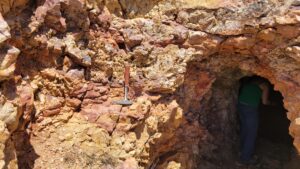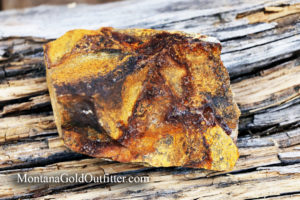Gold Mining
A Journey Through Modern Gold Mining The Gleaming Treasure of the Earth
 Gold mining, oh what a captivating pursuit it is! Across the centuries, this noble quest for nature’s most precious metal has enticed and enchanted miners and dreamers alike.
Gold mining, oh what a captivating pursuit it is! Across the centuries, this noble quest for nature’s most precious metal has enticed and enchanted miners and dreamers alike.
But what exactly is gold mining? Simply put, it is the act of extracting gold from the Earth’s crust.
Yet, its significance extends far beyond that straightforward definition. Gold mining holds a prominent place in human history, spanning cultures and civilizations throughout time.
Its allure stems from the undeniable allure of gold itself. Coveted for its lustrous beauty and inherent value, gold has played various roles in society.
Renowned as a symbol of wealth and power, it has been used to craft exquisite jewelry adorning kings and queens or fashioned into gleaming coins circulating economies. Moreover, it has become an essential component in numerous industries like electronics and dentistry due to its remarkable conductivity and malleability.
A Glimpse into Golden Ancestry
The story of gold mining can be traced back to antiquity when our ancestors first discovered glimmers of this precious metal in rivers or within rocks strewn across landscapes. The roots of gold mining dig deep into ancient civilizations such as the Egyptians, Romans, Greeks, Incas, Mayans – all captivated by its brilliance. In ancient Egypt, gold held a divine status as a symbol of immortality and was extensively used to adorn pharaohs’ tombs with elaborate treasures for their journey beyond life.
From there, we journey through time to ancient Rome where extensive hydraulic engineering systems were devised by skilled engineers known as “placer miners” who sought out alluvial deposits using aqueducts for irrigation. Across the globe in Central and South America during pre-Columbian times—the Inca Empire—a rich tapestry interwove artistry with gold mining.
They meticulously crafted intricate gold jewelry and ceremonial objects that conveyed their cultural identity and magnificence. As we embark upon this golden adventure, let us delve deeper into the formation and occurrence of gold, unearthing the mysteries hidden within the Earth’s embrace.
The Formation and Occurrence of Gold
How Gold is Formed in Nature
Gold, that mesmerizing and precious metal, is formed through extraordinary natural processes. It all begins deep within the fiery belly of our planet, where intense heat and pressure create the perfect conditions for gold to emerge.
Gold is primarily formed through a process called hydrothermal deposition. In this remarkable phenomenon, hot fluids rich in gold-bearing minerals circulate deep underground, seeking their path through fractures and fissures in the Earth’s crust.
Over time, as these mineral-rich fluids rise towards the surface due to changes in pressure and temperature, they gradually cool down. As they cool, the dissolved gold within them crystallizes and solidifies into veins or nuggets.
These veins can be found embedded within host rocks such as quartz or other minerals. The arduous journey from molten depths to glittering beauty is what gives gold its remarkable allure.
Geological Factors Influencing the Occurrence of Gold Deposits
The occurrence of gold deposits across the globe is not a result of mere chance; it is intricately connected to certain geological factors that play a crucial role in their formation. One significant factor is tectonic activity, which shapes our planet’s landscape over millions of years.
Regions with active tectonic boundaries—where continents collide or volcanic activity occurs—are often associated with substantial gold deposits. Moreover, geological structures such as faults and shear zones provide conduits for mineral-rich fluids to flow through the Earth’s crust.
These structures act like highways for hydrothermal solutions carrying dissolved gold from deep-seated sources towards shallower depths where we can access them more easily. Furthermore, specific rock types are also closely linked to gold occurrence.
For instance, granite rocks that form deep underground can act as heat engines, driving fluid circulation and providing favorable environments for gold precipitation. Understanding these geological factors is crucial for gold prospectors, as it allows them to pinpoint potential gold-rich areas and optimize their exploration efforts.
It is a harmonious dance between the mysteries of our planet and the quest for that gleaming treasure hidden within its bosom. So, dive into the captivating world of gold mining, where science and nature intertwine in an awe-inspiring union.
Types of Gold Deposits
Placer deposits: Alluvial and eluvial gold
Subtitle: The Gleaming Sands of Fortune When it comes to gold mining, placer deposits are often the first things that come to mind. These deposits are formed by the natural processes of weathering and erosion, which cause gold particles to be transported and deposited in the beds of rivers, streams, or even on the surface of the land.
Alluvial deposits, specifically, are those found in riverbeds or floodplains where water has carried gold particles from their original sources. This flowing water acts as a sorting mechanism, with heavier gold particles settling in certain areas due to their weight.
Eluvial deposits are similar to alluvial deposits but differ in their specific formation process. Instead of being transported by water, eluvial gold remains near its source within weathered rock formations.
Over time, as weathering breaks down rocks containing gold-bearing minerals, the heavy metal is released and accumulates at or near the surface. These deposits can be found on hillsides or slopes where gravity pulls down particulate matter containing gold.
Lode or vein deposits: Primary source of gold
 Subtitle: The Hidden Treasures beneath our Feet While placer deposits provide enticing nuggets scattered across riverbeds like hidden treasures waiting to be discovered by aspiring prospectors, lode or vein deposits serve as the primary source for most significant gold mining operations.
Subtitle: The Hidden Treasures beneath our Feet While placer deposits provide enticing nuggets scattered across riverbeds like hidden treasures waiting to be discovered by aspiring prospectors, lode or vein deposits serve as the primary source for most significant gold mining operations.
Lode deposits form deep within Earth’s crust through intricate geological processes that unfold over millions of years. The formation process begins with mineral-rich fluids seeping into cracks and fissures within pre-existing rocks.
These fluids typically consist of hot water carrying dissolved minerals such as quartz and sulfides along with small traces of precious metals like gold. As these fluids cool and react with their surroundings over time, they deposit minerals in cracks, veins, or fractures within the rocks.
The resulting lode deposits can take various forms, with quartz veins being the most common. These veins are characterized by their milky white appearance and can range in thickness from a few millimeters to several meters.
Another type of lode deposit is formed through shear zones, where intense pressure and deformation cause rocks to slip past each other, creating mineral-rich zones that concentrations of gold can accumulate in. Placer deposits offer the allure of easily accessible gold while eluvial deposits provide opportunities for surface exploration.
On the other hand, lode or vein deposits require more complex mining techniques but hold the potential for substantial gold extraction. These different types of gold deposits highlight the diversity and richness hidden beneath our planet’s surface, beckoning those with a keen eye and adventurous spirit to embark on a quest for fortune and glory.
Exploration Techniques in Gold Mining
Geophysical Methods for Prospecting Gold Deposits
When it comes to finding potential gold deposits, geophysicists have a wide array of tools at their disposal. These geophysical methods help them explore the subsurface in search of hidden treasure. One such technique is magnetic surveys, which involves measuring variations in the Earth’s magnetic field caused by different rock types.
By conducting these surveys, geophysicists can map out areas where certain rock formations associated with gold mineralization are more likely to be present. Another effective method for prospecting gold deposits is electrical resistivity surveys.
This technique involves passing an electric current through the ground and measuring how resistant different materials are to that current. Since rocks containing gold often have distinct resistivity signatures compared to surrounding rocks, this method can help identify potential targets for further exploration.
Airborne Techniques: Unleashing the Power of Electromagnetic Surveys and Airborne Magnetics
Sometimes, ground-based techniques may not provide a comprehensive view of large land areas or inaccessible terrains. In such cases, geophysicists turn to airborne techniques for prospecting gold deposits from above. One commonly used method is electromagnetic surveys, where an aircraft carries special sensors that transmit electromagnetic waves into the ground while recording their responses.
By analyzing these responses, experts can detect conductive materials associated with gold mineralization buried beneath the surface. Another valuable airborne technique is airborne magnetic surveying.
It involves magnetometers mounted on aircraft that measure variations in Earth’s magnetic field caused by magnetized rocks beneath the surface. Since different rock types possess unique magnetic signatures, this method helps identify structures and geological features related to potential gold deposits.
Geological Mapping and Sampling Methods
The Art of Geological Mapping: Unraveling Nature’s Clues
Geological mapping plays a crucial role in gold exploration as it provides vital information about the earth’s crust and the distribution of rocks. Geologists meticulously survey an area, meticulously noting various geological features, such as rock types, structures, and mineral occurrences.
By understanding the geological context of an area, experts can identify favorable conditions for gold mineralization. This process involves creating detailed maps that accurately represent the topography and rock formations present.
It requires keen observation skills, comprehensive knowledge of geology, and attention to detail. Geologists may use specialized tools such as compasses, GPS devices, and geological hammers to aid in their mapping efforts.
Sampling: A Peek into Earth’s Hidden Treasures
Sampling is a critical step in gold exploration as it allows geologists to gather physical evidence from the field for laboratory analysis. This evidence helps determine potential gold content and understand the geological characteristics of an area more effectively.
Two common types of samples collected are soil samples and rock chips. Soil sampling involves systematically collecting soil samples from various locations across a target area at specific depths.
These samples are analyzed for trace elements or chemical anomalies that could indicate the presence of gold-bearing minerals nearby. Rock chips or grab samples are collected by breaking off small pieces from exposed outcrops or freshly blasted rocks in underground tunnels.
These pieces then undergo detailed analysis in laboratories to identify minerals associated with gold deposits. By combining geophysical methods with accurate geological mapping techniques and thorough sampling procedures, experts can optimize their chances of discovering potentially lucrative gold deposits hidden beneath the Earth’s surface.
Mining Methods in Gold Extraction
Open-pit gold mining: Large-scale extraction method
Open-pit mining, also known as open-cast mining or surface mining, is a highly efficient method used to extract gold from large-scale deposits. This technique involves the excavation of an enormous pit or “open-pit” in the ground, where the precious metal is then extracted. The process begins with the removal of any overlying vegetation and topsoil to expose the ore body lying beneath.
Once this initial step is completed, heavy machinery such as excavators and haul trucks are employed to remove and transport the ore. The extracted material is then sent for further processing, where it undergoes crushing and grinding to separate out the coveted gold particles.
Processes involved in open-pit mining
Open-pit mining encompasses several key processes that are integral to its successful operation. One crucial aspect is drilling, which involves creating blast holes using specialized equipment. These holes allow for controlled explosives to be inserted and detonated safely within the ore body.
The explosions break apart large sections of rock for easier extraction. After blasting, loading and hauling become paramount tasks.
Massive trucks equipped with mechanical shovels load up the broken rock and transport it away from the pit for subsequent processing. This constant cycle of drilling, blasting, loading, and hauling ensures a continuous flow of ore throughout the operation.
Impacts on the environment
Though open-pit mining can yield substantial amounts of gold efficiently, it also comes with certain environmental implications that must be addressed responsibly. One significant concern is land disturbance – vast areas must be cleared to accommodate these expansive pits. This removal of vegetation can disrupt local ecosystems and affect wildlife habitats.
Additionally, during extraction processes like crushing and grinding, dust particles containing harmful substances may be released into surrounding environments if proper precautions aren’t taken. This can lead to air pollution and potential health risks for nearby communities.
To mitigate these impacts, mining companies are increasingly implementing best practices such as land reclamation, where the disturbed areas are rehabilitated post-mining. Furthermore, advanced technologies are being employed to reduce dust emissions and increase overall environmental sustainability in open-pit mining operations.
Underground mining: Extracting gold from deep underground
When gold deposits lie deeper within the Earth’s crust, underground mining becomes the preferred method for extraction. This technique involves accessing the ore through tunnels or shafts, providing miners direct access to valuable deposits located far below the surface.
Types of underground gold mining methods (e.g., shaft mining, drift mining)
There are several approaches used in extracting gold through underground mining. One common method is shaft mining, where vertical tunnels called shafts are constructed to transport personnel and equipment down into the mine.
These shafts also serve as conduits for removing extracted ore to the surface. Another technique employed is drift mining, which utilizes horizontal tunnels or “drifts” that follow along with mineralized veins within the earth.
Miners access these drifts and extract gold-rich materials as they progress along these pathways. Both methods require extensive planning and engineering expertise to ensure safe working conditions underground while effectively retrieving valuable resources.
Challenges faced in underground gold mining operations
Operating deep within the Earth poses significant challenges for miners engaged in underground gold extraction. Firstly, there is a constant concern for safety due to potential geological instabilities like cave-ins or rockfalls. Sophisticated support systems comprising rock bolts and mesh are installed to reinforce these excavated areas.
Moreover, ventilation becomes crucial when operating below ground as airflow must be maintained to ensure breathable air quality and remove potentially harmful gases emitted from certain rock formations. Navigating through narrow tunnels with heavy machinery can also prove challenging in underground mining.
Equipment must be designed with compact dimensions to fit within these confined spaces while still providing the necessary power and functionality. Despite these challenges, underground mining remains a viable method for extracting gold from deep deposits, allowing access to valuable reserves that traditional open-pit methods cannot reach.
Gold Processing Techniques
Crushing and Grinding: Breaking down the ore into smaller particles
When it comes to processing gold ore, one of the crucial steps is crushing and grinding. This process aims to break down the large chunks of ore into smaller particles, facilitating further extraction of gold.
Crushing involves using heavy machinery such as jaw crushers or cone crushers that apply pressure to the ore, breaking it apart. The ore is then sent through a series of grinding mills, which use rotating drums filled with steel balls to pulverize the material further.
The purpose of crushing and grinding is twofold: liberation and size reduction. Liberation refers to separating the valuable gold from other minerals or impurities within the ore.
By breaking down the larger rocks into smaller particles, it becomes easier for chemicals or other extraction methods to access and extract gold particles. Size reduction, on the other hand, ensures that these particles are small enough for efficient recovery processes.
The crushed and ground ore is typically mixed with water or a leaching solution before undergoing additional processing steps such as cyanidation or carbon-in-pulp (CIP). These techniques involve dissolving gold from the finely ground ore using chemicals like sodium cyanide, followed by further purification methods to obtain pure gold.
Conclusion
Gold mining is an intricate process that involves a variety of stages aimed at extracting this precious metal from nature’s grasp. From understanding its formation and occurrence in different deposits to employing exploration techniques and various mining methods like open-pit or underground operations, every step plays a crucial role in bringing forth this glittering treasure. Though mining may have its environmental impacts due to excavation processes and chemical usage in extraction techniques, there is also an increasing emphasis on sustainable practices within the industry.
Mining companies are investing in technologies that minimize their ecological footprint through responsible waste management systems and efforts towards land reclamation. Gold, with its captivating allure and enduring value, continues to be a symbol of wealth and prosperity.
Its journey from deep within the Earth’s crust to the refined bars we cherish is a testament to the ingenuity and perseverance of humankind. As we strive for sustainable mining practices that protect our planet, we can ensure that future generations will continue to marvel at the beauty and significance of this precious metal.
